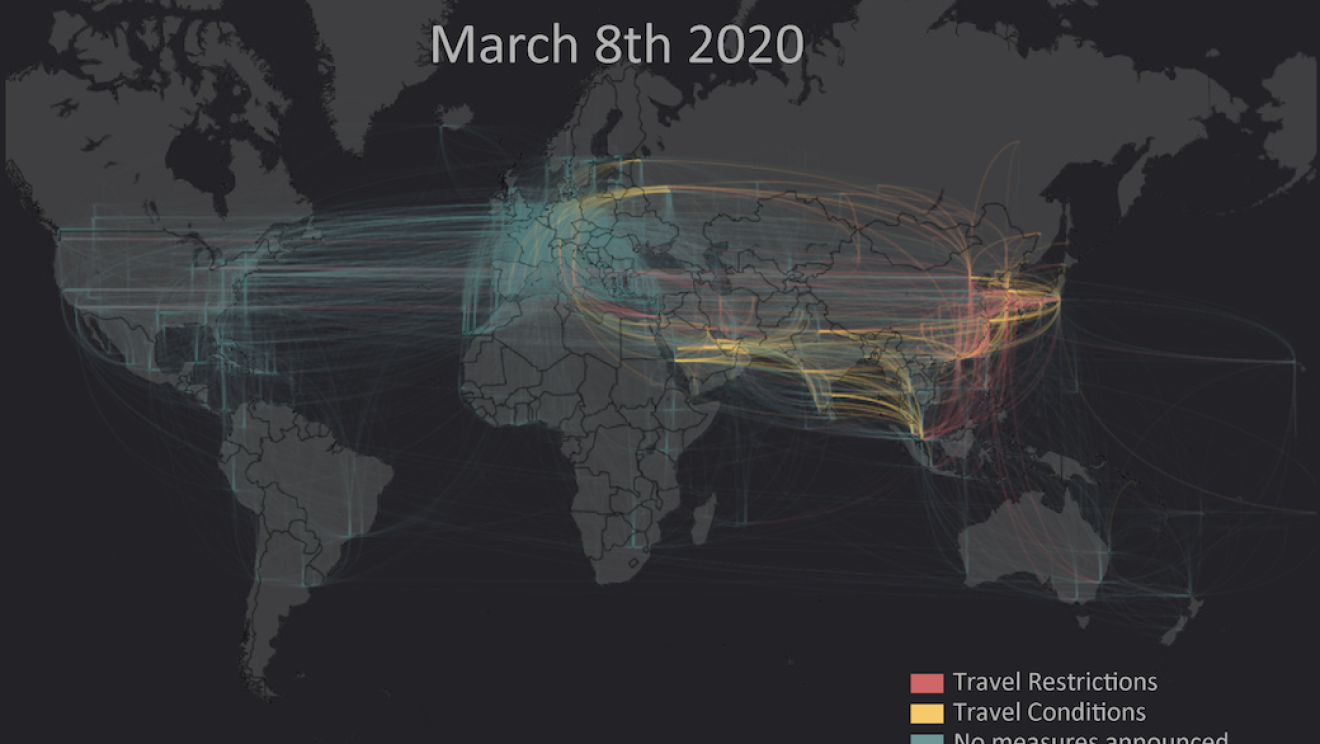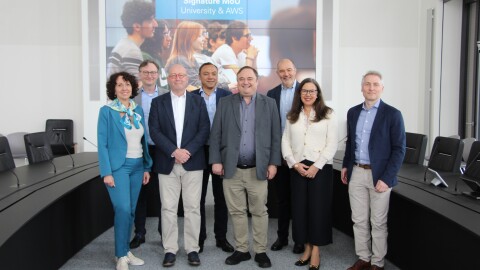COVID-19 has led to huge challenges for the world’s mobile populations – the millions of people who were moving between countries and regions before the pandemic, looking for better opportunities, to escape disaster or unrest, or because they have been displaced.
According to the International Organization for Migration (IOM), since the COVID-19 outbreak began, more than 227 countries, territories or areas worldwide have imposed more than 117,011 travel and mobility restrictions as of March 29 2021.
While these measures are designed to curb the spread of coronavirus, they have also created new difficulties for groups such as vulnerable Ethiopian migrants stranded in the Horn of Africa and the Gulf, and internally displaced people living in congested sites with limited access to water and sanitation facilities. These measures have also impacted groups not previously considered vulnerable, such as students, seasonal workers, and families trying to travel home.
Data for critical decision making
IOM, the world’s leading inter-governmental organisation in the field of migration, and an Amazon Web Services (AWS) customer, works to ensure the orderly and humane management of migration.
This includes giving humanitarian assistance – such as help with travel, medical aid and vocational training – to migrants who wish to return home, as well as providing stakeholders such as the United Nations, governments and migrants themselves with timely and accurate information on migration. This information can be everything from immigration and emigration statistics, to data on human trafficking, and much more.
The ability to gather, process and analyse large amounts of data from a variety of print and online sources is increasingly important to the IOM – now more so than ever as the COVID-19 crisis has demanded it rapidly increase the scale and scope of its work.
AWS first teamed up with the IOM in 2019 to help it build a data lake using cloud technology. This essentially enables the IOM to put all its knowledge – previously stored in a variety of different systems – in one place, in the same format, in order to analyse it more effectively.
This in turn allows it to provide its stakeholders with more timely and accurate data required to produce insights to make critical decisions, whether that’s reducing the time it takes to transform raw data into usable information, or enabling certain stakeholders to find the data they need more quickly.
Now, AWS is providing additional services and technical expertise, to support the IOM in accelerating its response to the pandemic.
Vulnerable and stranded populations
“IOM is focused on the links between humanitarian relief, migration and development, helping governments to facilitate regular migration, and addressing issues such as forced migration, or the gender, health, and labour rights aspects of migration,” explains Jeffrey Labovitz, Director for Operations and Emergencies at the IOM.
“That means we directly manage camps for displaced people in conflict areas, for example coordinating water, food and aid delivery.”

In 2019, IOM provided services including site construction and maintenance, water, sanitation and hygiene services and provision of shelter, in more than 1,100 displacement sites across 23 countries, reaching 2.4 million people displaced from conflict or disasters.
“Our work reaches a variety of groups of people on the move – ranging from migrant workers to ‘internally displaced persons’, or IDPs,” adds Jeffrey. “When you see large groups of people moving across borders, into countries like Libya or Yemen for example, we will support with basic services on their route. We also help people who are stranded in dangerous countries to return home.”
The data lake IOM has built on AWS consolidates the knowledge the organisation has gathered and continues to gather on the multitude of factors that influence migrants’ ability to make a safe journey across countries, with topics including migrant rights, gender and health status, and public opinion on migration.
By bringing together information from different databases, archives, and print sources into the data lake, the IOM has been able to run analyses on the information exponentially faster than before.
In the long-term, this will not only improve information sharing within the IOM itself – cutting down the time it takes to identify the locations, situations, and needs of migrants in vulnerable situations – it should also enable the organisation to predict future migration patterns, which could help with resource allocation and preparedness planning for disasters like COVID-19.
Global mobility and the spread of the coronavirus are intrinsically linked… mapping global movements is a remarkably visual way to understand how the virus might be spreading.
Jeffrey says that, before the pandemic, at least 55 countries around the world were already experiencing a humanitarian crisis.
“There is now an increased risk among the most vulnerable populations due to COVID-19,” he continues. “You can imagine the challenges in an over-crowded place like an IDP or refugee camp, with poor sanitation and malnutrition.”
“In some of the biggest camps in the world, like Cox’s Bazar in Bangladesh, we are working on protective equipment, supply chain management, and guidance notes on key issues such as social distancing.”
“Ear to the ground”
One of the ways the IOM is able to understand how people are displaced by conflict, or disasters such as the coronavirus pandemic, is with its Displacement Tracking Matrix (DTM).
In addition to analysing primary data gathered by the IOM’s in-country teams on the ground, the DTM monitors secondary data in the form of information about migration published daily by worldwide media, whether that’s online, in print, or in real time on social media.

On a typical day there will be thousands of individual stories, which may not necessarily all be covered by the big international news outlets. For example, a local Arabic language news site may run a piece on the status of migrant workers in a particular Gulf state, but this won’t necessarily be picked up outside of a certain number of countries.
This is where AWS technology comes in. Whereas in the past IOM staff had to manually search for these articles online, AWS is helping the organisation gather information in real time and simplify it into ‘actionable items’. That means automatically capturing the most relevant articles, summarising them and packaging them in a report three times per day.
This allows the IOM to have an extra ‘ear on the ground’, to learn about people movements from rapid, real-time sources, which complement its existing internal reporting mechanisms.
AWS has helped the IOM expand the DTM so it now monitors information from 160 countries – double the number than before the outbreak of COVID-19.
“AWS has enabled us to work better and faster in a time of crisis,” explains Nuno Nunes, Global DTM Co-ordinator for the IOM.
“We can share critical information on the mobility, vulnerabilities, and needs of displaced and mobile populations with decision makers and responders – including a live, visualised map of mobility at national and international level.”
“This is enabling organisations to allocate resources directly to migrants such as food, healthcare, economic support and assistance for safe, voluntary return home. It also acts as a kind of ‘early warning’ signal about how the virus can impact different groups of people.”
Expanding capacity to respond
Since the pandemic began, the DTM website has seen a surge in traffic. Migrants in the UK, for example, were searching for urgent information on how to receive support for themselves and their loved ones affected by the mobility restrictions and broader lockdown measures imposed to curb the spread of the disease. The number of enquiries to IOM UK’s phone lines, as well as requests for information in multiple languages, increased rapidly.
In response to this need, IOM UK initially developed a multi-lingual website to consolidate information from various government and non-government sources on key themes of importance to migrants.
AWS has since helped it set up a virtual call centre in the cloud, to provide rapid capacity to manage enquiries in any language.
“We identified the need to have direct conversations with migrants that went beyond the information available online,” says Ottmar Figueroa, ICT Policy and Governance Officer, who is also the ICT Division’s Data & Analytics Leader.
“We integrated Amazon Connect with our IOM UK COVID-19 Migrant Information website, providing a toll-free number that connects migrants to multilingual agents. The call centre is entirely cloud-based, allowing us to connect and forward calls at around fifteen times the capacity we had previously – at a very low cost.”
“We were also able to incorporate the added functionality of dialling in on-demand telephone interpreters to ensure we can cover all languages that may be required,” adds Ottmar. “It allows us to bridge the gap between our teams’ capacity, the evolving nature of this crisis, and the individual needs of the end user.”
Beyond the crisis
The team at IOM believe working with AWS has potential to change how the organisation operates in the long term and they are already exploring new projects.
For example, enhancing the IOM’s ability to communicate with migrants has in turn changed migrants’ role in the process from passive users to active participants.
We identified the need to have direct conversations with migrants that went beyond the information available online.
“The people we assist through our technology portfolio are now active stakeholders, who can provide feedback and make suggestions by approaching us collaboratively,” says Ottmar.
“Our solutions are no longer only providing organisations and individuals with data; we can be more proactive in knitting together contacts, information and solutions for people.”
“We have an increasingly better understanding and use of the data, which makes it easier to measure our impact and prove cost efficiency. We can now tell you with certainty, for example, how many migrants we helped last month, or how many minutes our agents spend speaking to migrants, in real time, without the need to buy any equipment or to install any software, thanks to our partnership with AWS.”
And Jeffrey adds that as the nature of migration continues to change, the cloud is proving integral to the IOM’s ability to meet the needs of an increasingly expanded audience.
“Migration is not only about displaced populations. As we have seen during this pandemic, a migrant could be your neighbour who has been travelling and needs information on how to return quickly, or a family member studying abroad who is looking for a way to come home.”
In a connected, globalised world with huge population growth, IOM anticipates that the value and application of cloud technology in helping to monitor and understand migration flow in times of crisis, and beyond, will only continue to grow.
“We knew the warning signs for this kind pandemic were always there,” Jeffrey explains. “Now, with AWS technology, we’re in a much better position to plan for the next one.”














